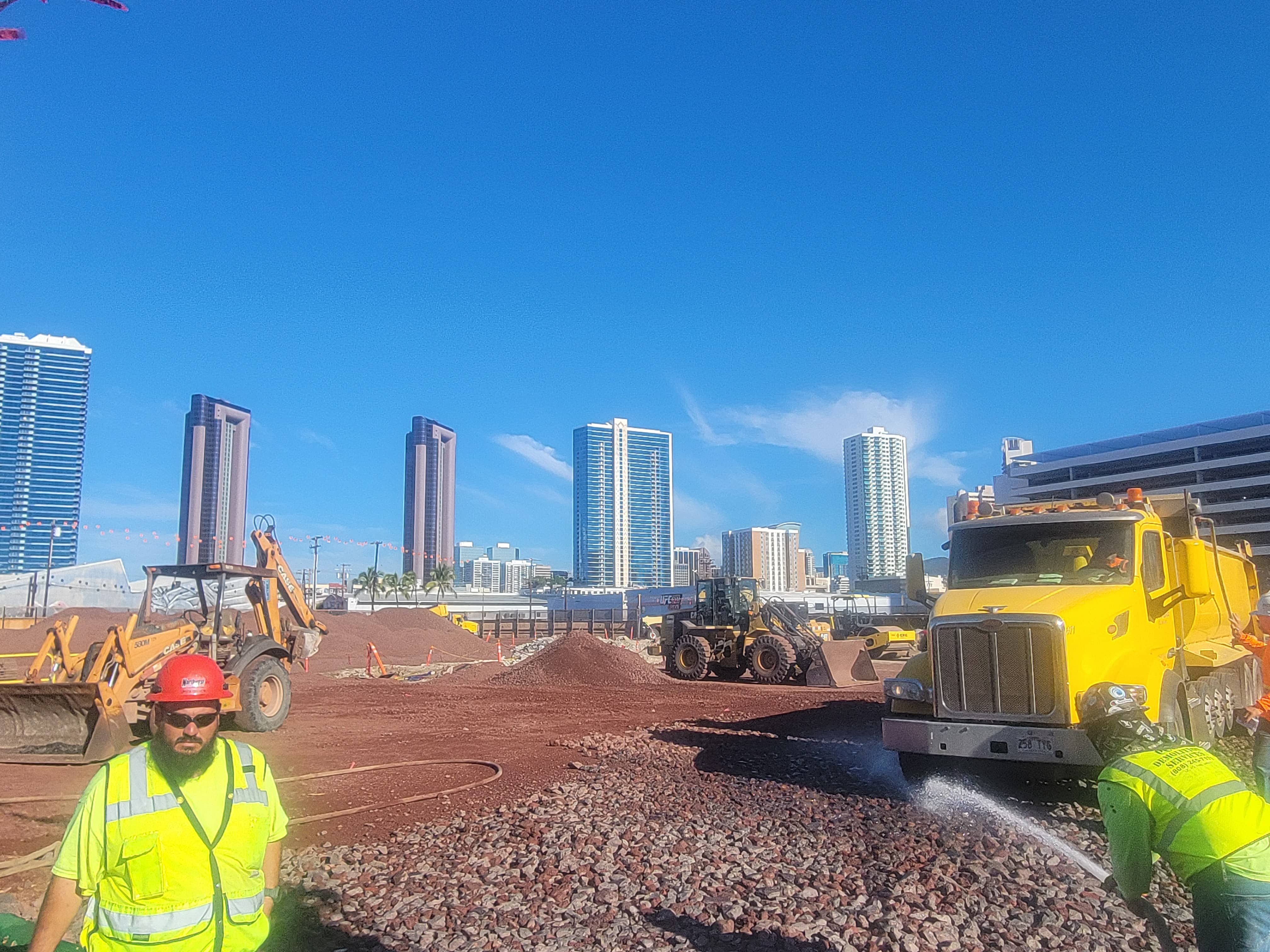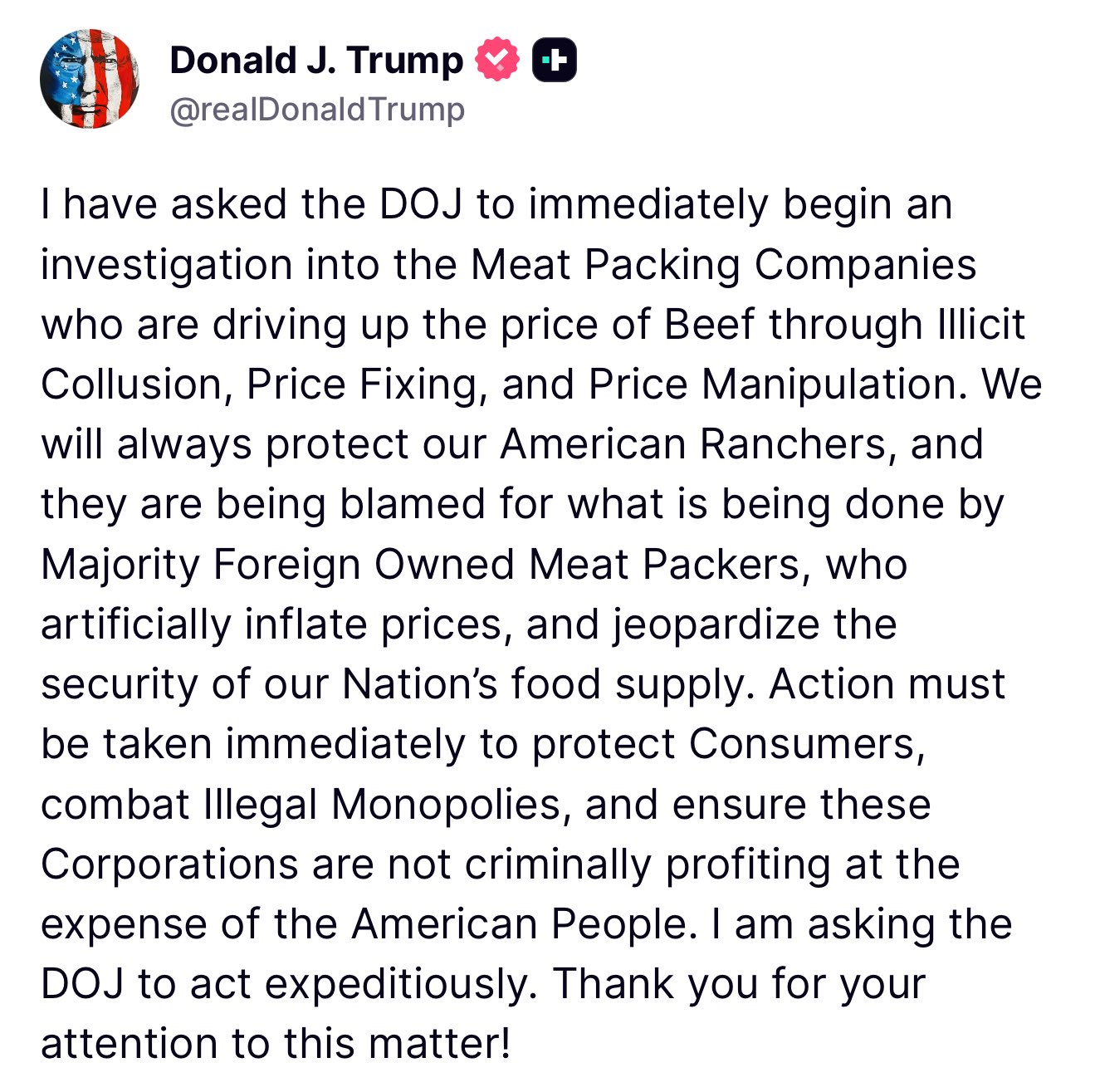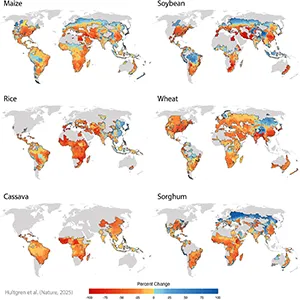USDA Cancels $30 Million Grant Intended To Boost Hawaiʻi Food Production – Honolulu Civil Beat

Federal Funding Cancellation Impedes Progress on Sustainable Development Goals in Hawaiʻi
Introduction: A Setback for Food Security and Sustainable Agriculture
Recent federal actions have resulted in the cancellation of millions of dollars in grant funding designated for Hawaiʻi, severely impacting initiatives aimed at enhancing local food security and promoting sustainable agriculture. The termination of the U.S. Department of Agriculture’s (USDA) Islands and Remote Areas Regional Food Business Center jeopardizes progress toward several key Sustainable Development Goals (SDGs), particularly in a state that imports over 85% of its food. The funding cuts undermine efforts to build resilient food systems, support local economies, and achieve sustainable community development.
Impact on SDG 2: Zero Hunger
The primary objective of the canceled funding was to bolster local food production, directly aligning with SDG 2 (Zero Hunger), which seeks to ensure access to safe, nutritious, and sufficient food for all. The withdrawal of support presents a significant challenge to this goal.
- Increased Vulnerability: The loss of funding perpetuates Hawaiʻi’s heavy reliance on imports, leaving its food supply chain vulnerable to external disruptions and undermining food security.
- Program Cancellation: The $30 million grant for the Islands and Remote Areas Regional Food Business Center, led by the Hawaiʻi Good Food Alliance, has been effectively canceled. This program was designed to address the unique food system challenges shared by Hawaiʻi, Alaska, Puerto Rico, and other U.S. territories.
- Hindered Local Production: Without this financial support, local farmers and food producers have fewer resources to increase and improve their operations, stalling progress toward greater food self-sufficiency.
Economic Repercussions and Setbacks for SDG 1 and SDG 8
The funding cuts deliver a direct economic blow to the local agricultural sector, impeding progress on SDG 1 (No Poverty) and SDG 8 (Decent Work and Economic Growth). The loss of capital limits the ability of small and medium-scale agricultural enterprises to grow and create sustainable livelihoods.
- Direct Financial Losses: Hawaiʻi has lost $3.5 million in direct funding intended for approximately five dozen local farmers and food distributors, in addition to $1.5 million for technical assistance programs.
- Impact on Cooperatives: The Hawaiʻi ʻUlu Cooperative, representing over 200 members, lost nearly $1 million in grants designated for improving post-harvest food safety and financing agroforest systems. Dana Shapiro, the cooperative’s executive director, noted the scarcity of alternative funding, stating, “Generally, banks don’t provide funding for small and medium-scale agriculture and so government grants and loans provided one of the few access points to funding for farmers.”
- Loss of Technical Support: The GoFarm Hawaiʻi initiative lost $300,000 for technical assistance and an additional $500,000 in direct funding for farmers. This support was critical for helping farmers invest in efficiency improvements, which would allow them to increase production and profitability, contributing directly to economic growth.
Undermining Sustainable Communities and Production (SDG 11, SDG 12, & SDG 13)
This decision is the latest in a series of federal funding cuts that weaken Hawaiʻi’s ability to build sustainable communities and foster responsible production, affecting SDG 11 (Sustainable Cities and Communities), SDG 12 (Responsible Consumption and Production), and SDG 13 (Climate Action).
- Systemic Funding Reductions: Previous cuts have targeted a $3 billion program that would have brought $46 million to Hawaiʻi for climate-smart initiatives like planting food forests, managing invasive species, and improving soil health.
- Erosion of Resilience: By removing resources for local food systems, the cuts diminish the resilience of island communities that are uniquely exposed to climate and supply chain risks.
- Discouraging Sustainable Practices: The funding was intended to help farmers adopt more efficient and sustainable practices, a key component of SDG 12. The cancellation punishes careful, long-term planning, as noted by Harmonee Williams, executive director of the Hawaiʻi Good Food Alliance: “I feel like we’ve been punished for taking the time to try to get it right.”
Dissolution of Collaborative Efforts and Impact on SDG 17
The termination of the Regional Food Business Center dismantles a vital partnership, representing a setback for SDG 17 (Partnerships for the Goals). The program was a collaborative effort to address shared challenges across diverse and remote U.S. regions.
- A Multi-Regional Partnership: The center united Hawaiʻi, Alaska, the U.S. Virgin Islands, Puerto Rico, Guam, American Samoa, and the Northern Mariana Islands.
- Loss of Shared Learning: The cancellation ends a platform for these regions to learn from one another and collectively develop solutions for propping up food production in remote and non-continental areas.
- Commitment to Collaboration: Despite the setback, program leaders have expressed a commitment to maintaining the relationships forged. “One of the greatest outcomes of this is just making those relationships with people in other islands and territories and learning from each other,” stated Harmonee Williams.
Analysis of Sustainable Development Goals (SDGs) in the Article
1. Which SDGs are addressed or connected to the issues highlighted in the article?
-
SDG 2: Zero Hunger
This is the most central SDG in the article. The text revolves around efforts to “increase food security” in Hawaiʻi, a state that imports “more than 85% of its food.” The cancellation of funding directly impacts programs designed to “uplift food systems” and “prop up food production,” which are core to achieving Zero Hunger.
-
SDG 8: Decent Work and Economic Growth
The article discusses the economic viability of local agriculture. The cancelled grants were aimed at helping “food producers and distributors increase their scale and profitability.” The text highlights the financial struggles of “small and medium-scale agriculture,” noting that government grants are one of the “few access points to funding,” which is crucial for economic growth and job creation in the sector.
-
SDG 11: Sustainable Cities and Communities
The focus on island states and territories like Hawaiʻi, Alaska, and Puerto Rico addresses the unique challenges of remote and non-mainland communities. The “Islands and Remote Areas Regional Food Business Center” was a project aimed at strengthening regional food systems and fostering self-sufficiency, which aligns with making communities more sustainable and resilient.
-
SDG 12: Responsible Consumption and Production
By aiming to increase local food production, the initiatives described in the article implicitly support more sustainable production patterns by reducing the need for long-distance transportation of imported food. Furthermore, the article explicitly mentions a loss of funding intended to “bolster post-harvest food safety,” a key component in reducing food losses along the supply chain.
-
SDG 13: Climate Action
The article directly links the funding cuts to climate-related initiatives, stating that the federal government is withholding “other local farming subsidies, including ones related to climate change.” This directly impacts Hawaiʻi’s capacity to implement agricultural practices that can mitigate and adapt to climate change.
-
SDG 15: Life on Land
The article mentions that axed funding would have supported “a long list of agricultural initiatives, from planting food forests to managing invasive species and improving soil health.” These activities are directly related to protecting and restoring terrestrial ecosystems and promoting sustainable land use.
-
SDG 17: Partnerships for the Goals
The entire issue revolves around a partnership between the federal government (USDA) and a coalition of states and territories led by a civil society organization (“Hawaiʻi Good Food Alliance”). The cancellation of the “$400 million effort” is a setback for this public-civil society partnership aimed at achieving sustainable development.
2. What specific targets under those SDGs can be identified based on the article’s content?
-
SDG 2: Zero Hunger
- Target 2.1: End hunger and ensure access to safe, nutritious, and sufficient food. The article’s core theme is the struggle for “food security” in a state that heavily relies on imports (“more than 85% of its food”).
- Target 2.3: Double the agricultural productivity and incomes of small-scale food producers. The cancelled “Business Builder grants” and funding for “small and medium-scale agriculture” were designed to do exactly this by helping producers “increase their scale and profitability.”
- Target 2.4: Ensure sustainable food production systems. The mention of funding for “improving soil health” and financing “agroforest systems” directly supports this target.
-
SDG 8: Decent Work and Economic Growth
- Target 8.3: Promote policies that support productive activities and small- to medium-sized enterprises. The article laments the lack of funding for “small and medium-scale agriculture” and highlights how government grants were one of the “few access points to funding” for these enterprises.
-
SDG 11: Sustainable Cities and Communities
- Target 11.a: Support positive links between urban, peri-urban, and rural areas by strengthening regional development planning. The “Islands and Remote Areas Regional Food Business Center” is a clear example of a regional planning initiative designed to strengthen local food systems in “rural places and islands.”
-
SDG 12: Responsible Consumption and Production
- Target 12.3: Reduce food losses along production and supply chains, including post-harvest losses. The article specifies that the Hawaiʻi ʻUlu Cooperative lost “$300,000 to bolster post-harvest food safety,” which is a direct effort to reduce post-harvest loss.
-
SDG 15: Life on Land
- Target 15.3: Combat desertification and restore degraded land and soil. The axed funding for “improving soil health” is a direct link to this target.
-
SDG 17: Partnerships for the Goals
- Target 17.3: Mobilize additional financial resources. The article is entirely about the mobilization and subsequent cancellation of federal grant money (“$400 million,” “$30 million,” “$3.5 million”) for local development.
- Target 17.17: Encourage and promote effective public, public-private, and civil society partnerships. The collaboration described between the USDA (public), the Hawaiʻi Good Food Alliance (civil society), and local farmers/cooperatives is a prime example of such a partnership being undermined.
3. Are there any indicators mentioned or implied in the article that can be used to measure progress towards the identified targets?
-
Indicator for Target 2.1:
The article provides a clear baseline indicator: the percentage of food imported into Hawaiʻi, which is “more than 85%.” A reduction in this percentage would indicate progress towards greater food security.
-
Indicators for Target 2.3:
The article mentions several financial and technical support indicators, albeit as losses. These include:
- The amount of funding available through grants, such as the “Business Builder grants — infusions of $15,000 to $100,000.”
- The total direct funding for farmers, such as the lost “$3.5 million in direct funding for roughly five dozen local farmers.”
- The number of farmers receiving support, such as the “dozen farmers” who would have received technical assistance from GoFarm Hawaiʻi.
-
Indicator for Target 12.3:
A specific financial indicator is mentioned: the amount of investment in post-harvest infrastructure. The article cites the loss of “$300,000 to bolster post-harvest food safety” for the Hawaiʻi ʻUlu Cooperative as a direct negative indicator.
-
Indicator for Target 17.3:
The total amount of mobilized financial resources is a key indicator. The article provides specific figures that can be tracked, such as the “$400 million” federal program, the “$30 million” slice for islands, and the “$46 million” from another axed program.
4. Summary of SDGs, Targets, and Indicators
| SDGs | Targets | Indicators (Mentioned or Implied in the Article) |
|---|---|---|
| SDG 2: Zero Hunger | 2.1: Ensure access to safe, nutritious, and sufficient food. | Percentage of food imported (currently “more than 85%”). |
| 2.3: Double agricultural productivity and incomes of small-scale food producers. | Amount of financial resources for farmers (e.g., “$15,000 to $100,000” grants); Number of farmers receiving technical assistance (“about a dozen farmers”). | |
| 2.4: Ensure sustainable food production systems. | Funding for sustainable practices (e.g., “improving soil health,” “agroforest systems”). | |
| SDG 8: Decent Work and Economic Growth | 8.3: Promote policies supporting small- and medium-sized enterprises. | Availability of government grants and loans for “small and medium-scale agriculture.” |
| SDG 11: Sustainable Cities and Communities | 11.a: Strengthen national and regional development planning. | Existence and funding of regional bodies like the “Islands and Remote Areas Regional Food Business Center.” |
| SDG 12: Responsible Consumption and Production | 12.3: Reduce food losses, including post-harvest losses. | Investment in post-harvest infrastructure (e.g., “$300,000 to bolster post-harvest food safety”). |
| SDG 15: Life on Land | 15.3: Restore degraded land and soil. | Funding for initiatives such as “improving soil health” and “planting food forests.” |
| SDG 17: Partnerships for the Goals | 17.3: Mobilize additional financial resources. | Amount of federal grant money mobilized or cancelled (e.g., “$400 million,” “$30 million”). |
| 17.17: Encourage effective public, public-private, and civil society partnerships. | Functioning and support for partnerships between government (USDA) and civil society (Hawaiʻi Good Food Alliance). |
Source: civilbeat.org

What is Your Reaction?
 Like
0
Like
0
 Dislike
0
Dislike
0
 Love
0
Love
0
 Funny
0
Funny
0
 Angry
0
Angry
0
 Sad
0
Sad
0
 Wow
0
Wow
0













































































